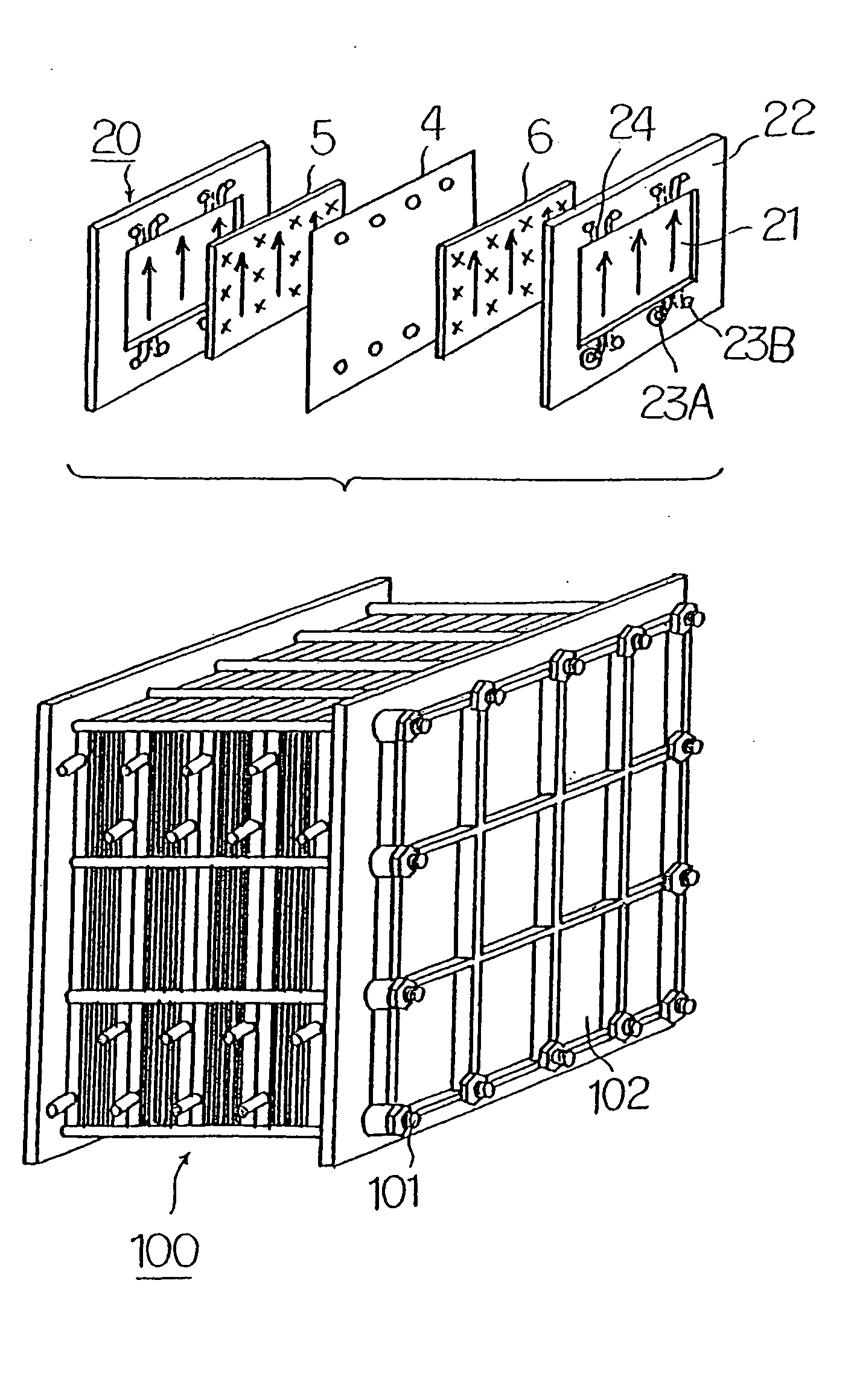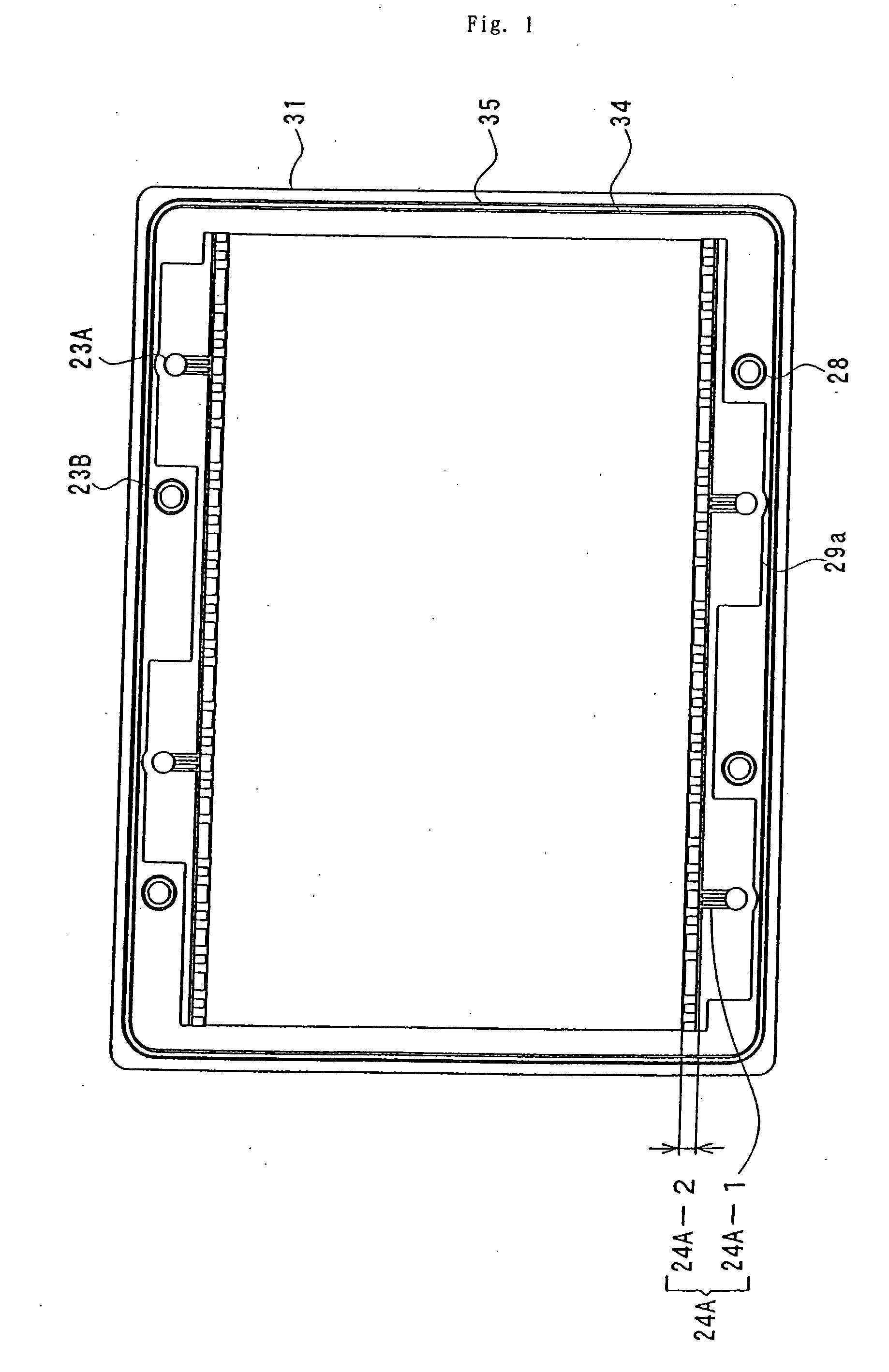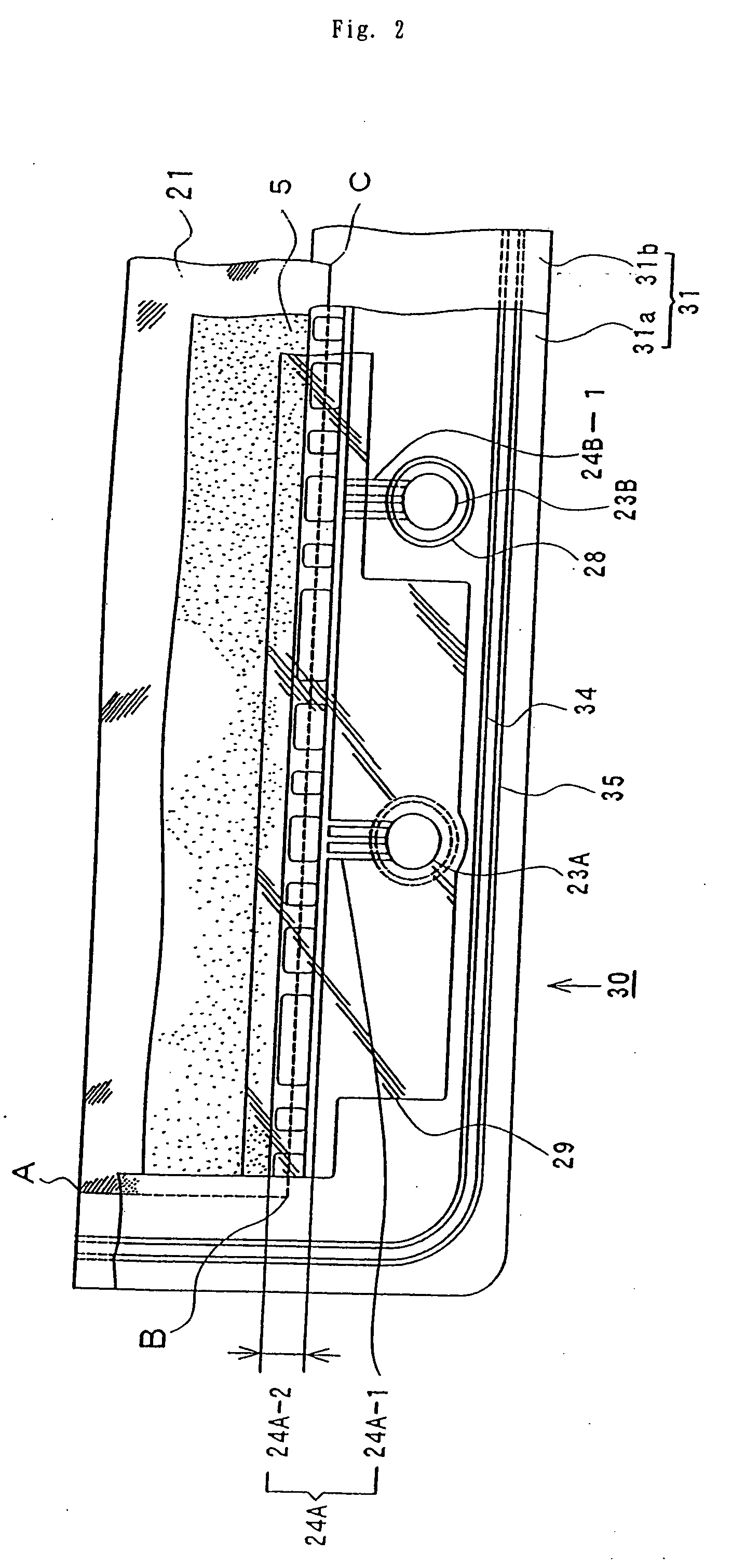Cell frame for redox flow battery, and redox flow battery
a cell frame and redox flow technology, applied in the direction of secondary cell details, non-aqueous electrolyte cells, indirect fuel cells, etc., can solve the problems of inability to effectively prevent electrolyte leakage between the cell frame and the cell frame, and poor workability in cell stack assembly, etc., to suppress losses, reduce pressure losses in the electrolyte circulation, and reduce losses. the effect of electric current flowing in the electroly
- Summary
- Abstract
- Description
- Claims
- Application Information
AI Technical Summary
Benefits of technology
Problems solved by technology
Method used
Image
Examples
example 1
[0069] Using the cell stack mentioned above, a redox flow secondary battery was produced, and battery performances and discharge possible power of that redox flow secondary battery were measured. Data on material, size, and others of the cell stack and measurement results are shown below.
[0070] Size
[0071] Outer size: 1,000 mm wide, 800 mm high, and 5 mm thick,
[0072] Inner size: 900 mm wide and 600 mm high,
[0073] Seal groove: 3 mm wide, 1 mm deep, and 5 mm in distance between grooves,
[0074] O-ring size: 1.5 mm in diameter of cross-section of the ring, and 1,000 mm in diameter,
[0075] Inner and outer seal grooves: Arranged at the same locations on both sides of the cell frame,
[0076] Ratio of diameter of manifold to total width of cell frame: 3%,
[0077] Ratio of distance between adjacent manifolds to total width of cell frame: 30%,
[0078] Cross-sectional area of guide groove: 5 mm2,
[0079] Material: Resin comprising 50 mass % vinyl chloride and 50 mass % acrylonitrile-butadiene-s...
example 2
[0094] Using the cells of the present invention, a different redox flow secondary battery from that of Example 1 was produced, and battery performances and discharge possible power of that redox flow secondary battery was measured. Differences in data on material, size, and others of the cell stack from those of Example 1 and measurement results are shown below.
[0095] Size
[0096] Outer size: 1,000 mm wide, 500 mm high, and 4 mm thick,
[0097] Inner size: 900 mm wide and 300 mm high,
[0098] Seal groove: 2 mm wide, 1 mm deep, and 5 mm in distance between grooves,
[0099] O-ring size: 1.5 mm in diameter of cross-section of the ring, and 750 mm in diameter,
[0100] Inner and outer seal grooves: Arranged on both sides of the cell frame at the locations shifted 8 mm away from each other,
[0101] Ratio of diameter of manifold to total width of cell frame: 2%,
[0102] Ratio of distance between adjacent manifolds to total width of cell frame: 35%,
[0103] Material: Resin comprising 90 mass % viny...
PUM
| Property | Measurement | Unit |
|---|---|---|
| distance | aaaaa | aaaaa |
| area | aaaaa | aaaaa |
| thickness | aaaaa | aaaaa |
Abstract
Description
Claims
Application Information
 Login to View More
Login to View More - R&D
- Intellectual Property
- Life Sciences
- Materials
- Tech Scout
- Unparalleled Data Quality
- Higher Quality Content
- 60% Fewer Hallucinations
Browse by: Latest US Patents, China's latest patents, Technical Efficacy Thesaurus, Application Domain, Technology Topic, Popular Technical Reports.
© 2025 PatSnap. All rights reserved.Legal|Privacy policy|Modern Slavery Act Transparency Statement|Sitemap|About US| Contact US: help@patsnap.com



